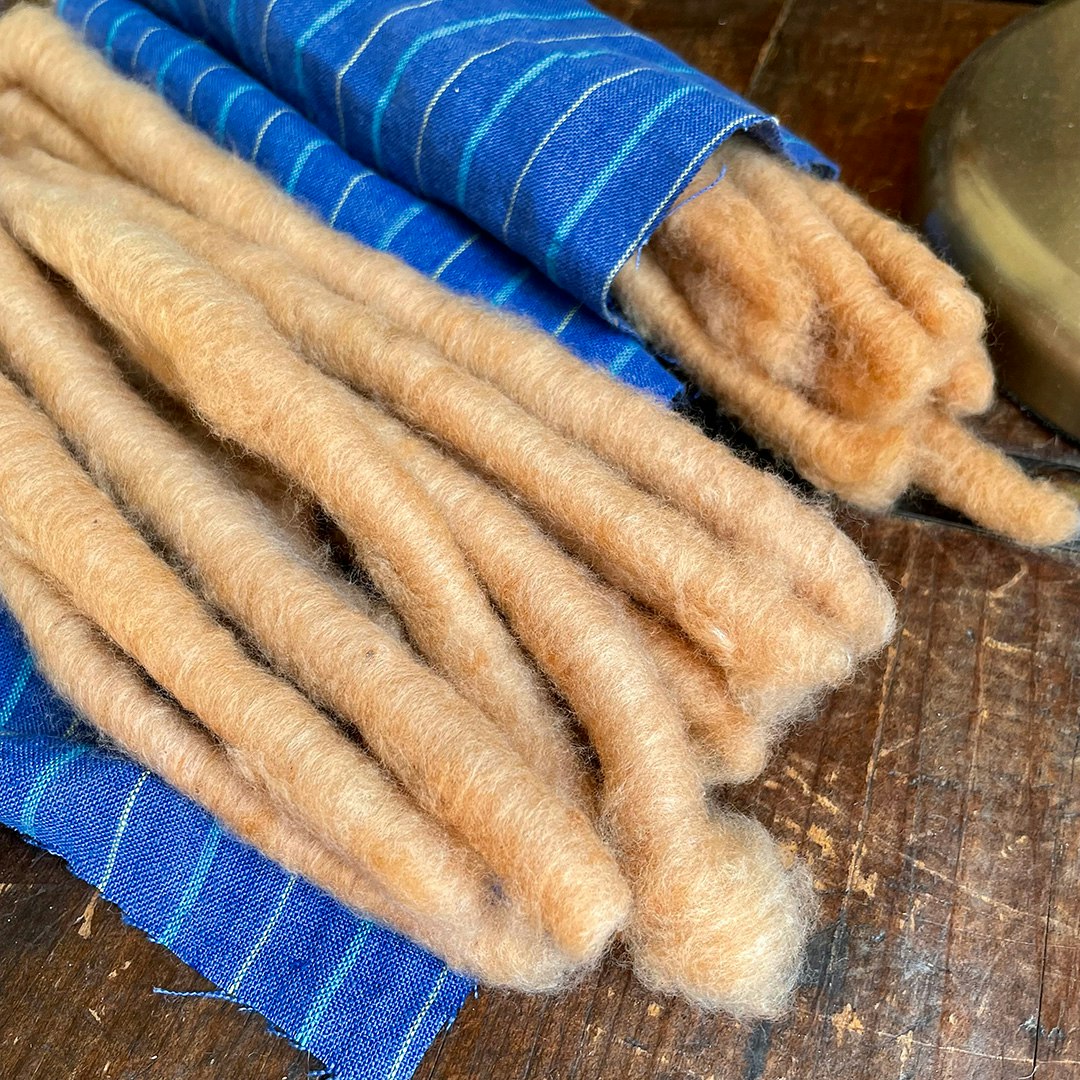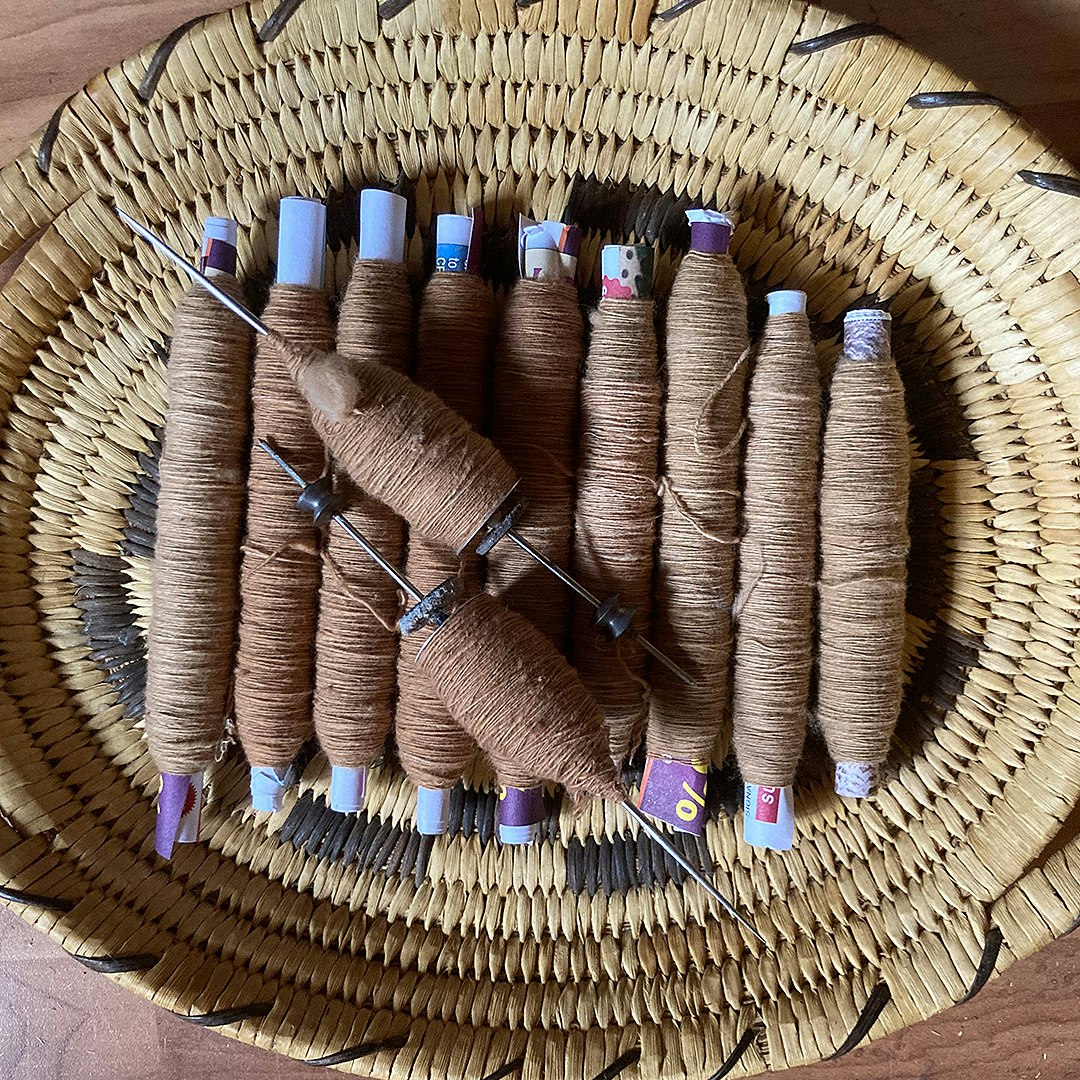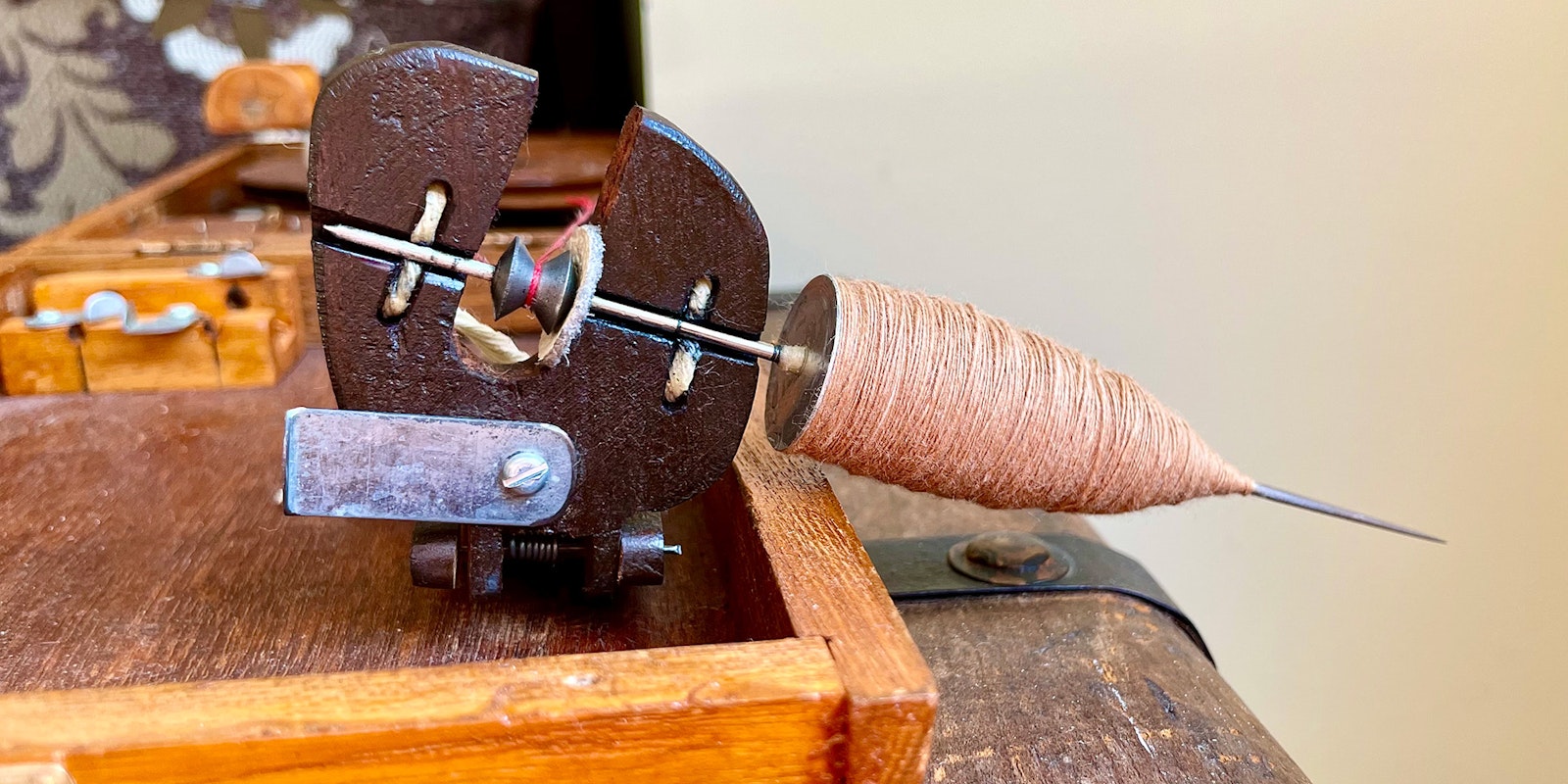When I planned for this year’s Tour de Fleece, I pulled some stricks of flax and bags of washed fleece out of my stash. As an afterthought, I added a bag of cotton bolls, planning to spin it using my Indian book charkha. I started spinning the flax but took a break to spin on my Indian book charkha. Much to my surprise, I could not stop and have now been spinning cotton ever since.
 Devin’s perfect cotton punis, created with hand-ginned fiber from brown cotton bolls. Photo courtesy of Spin Off
Devin’s perfect cotton punis, created with hand-ginned fiber from brown cotton bolls. Photo courtesy of Spin Off
I have had my Indian book charkha for almost 10 years, and for most of that time, it was on semipermanent loan to Kate Larson. She used it to teach workshops, which was just as well because I could not get into a comfortable routine when spinning with it. When I gave it to her, the spindle wobbled, the wheels did not turn smoothly, the angle of the spindle was not well suited to my drafting, and spinning on it was a combination of discomfort and frustration. I purchased a modern precision-made charkha, which I used for a while but also put that aside.
When I had the opportunity to take a charkha spinning class with Kate at SOAR 2021, I decided to give the traditional book-charkha style one last chance.
When I got to class, I was surprised to see my own charkha as one of the many set out ready for students to use. I remembered struggling to get the drivebands to the right size, getting the yarn stops to stay put on the spindles, and finding a good position for all the adjustable parts. I chose the spot with my charkha—hoping to save the other students from a bad experience—and gave the handle an experimental spin. Imagine my surprise when the wheels both turned smoothly and the spindle whirred with a satisfying hum. It did not seem like the same charkha.
 Devin’s Tour de Fleece cotton singles. Photo by Devin Helmen
Devin’s Tour de Fleece cotton singles. Photo by Devin Helmen
The Beauty of a Well-Loved Charkha
In class, Kate described some of the simple adjustments she had made that resulted in a smoother and more productive experience. She pointed out the places on the charkha that I can move and adjust to suit my own spinning style. I could sit or stand and use several different drafting techniques as I liked. It was a completely different spinning experience, and I asked Kate if I could bring my charkha home now that I felt it was a tool I could use with pleasure instead of gritting my teeth. So, my charkha—now tuned and oiled—came back to Minnesota after SOAR.
When I want to spin large amounts of cotton for weaving or knitting, I still usually reach for my e-spinner, but I enjoy the process of spinning on a charkha because it gives me a different movement and spinning experience. I find that I enjoy the fiber more and relax into an almost meditative state when I spin with a charkha. I pull out my charkha most when I am spinning punis, which I card by hand.
I am so grateful to be able to connect with a tool I have always admired, both for the history connected with Gandhi’s swadeshi movement and the beautiful thrift and individuality that Indian book charkhas have. Many book charkhas made today have elements created using recycled materials, embodying Gandhi’s intention for this design to require minimal resources and local materials.
During Tour de Fleece, I spent time watching Kate’s new charkha spinning course. I picked up on some of the things that I’d forgotten from the SOAR workshop. With the trouble-shooting tips, I was able to move my leather bearing back where it should be and replace the spindle bearings with cordage from my garden. Now, I can listen to the smooth hum of a well-loved charkha once again.
Devin Helmen has been immersed in fiber since learning to spin at age 8. They spin, knit, and weave in beautiful Minnesota. Devin enjoys writing and teaching about fiber arts and has a passion for spindles and everyday textiles. They blog, intermittently, at afewgreenfigs.blogspot.com.

